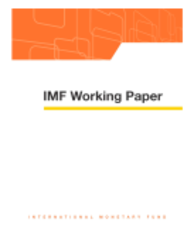
A Macro Model of the Credit Channel in a Currency Union Member : The Case of Benin
This paper applies and extends a theoretical model built by Agénor and Montiel (2007) by exploring the effectiveness of government bonds and monetary policy in a small, open, credit-based economy with a fixed exchange rate. The model is applied to Benin, a member of a currency union, using a general equilibrium model with stochastic simulation. Model calibration replicates the historical pattern for 1996–2009. Policy experiments simulated an increase in government securities in Benin's regional market and a cut in the reserve requirement. Simulations produced mixed results. It appears that, among other factors, excess bank liquidity lowers the effectiveness of monetary policy instruments through the credit channel and that government bonds can help mop up excess bank liquidity.
Publication date: August 2010
ISBN: 9781455202256
$18.00
Add to Cart by clicking price of the language and format you'd like to purchase
Available Languages and Formats
| English |
Prices in red indicate formats that are not yet available but are forthcoming.
Topics covered in this book
This title contains information about the following subjects.
Click on a subject if you would like to see other titles with the same subjects.
Finance , Benin , Credit channel , government bonds , general equilibrium , stochastic simulation , bonds , reserve requirement , monetary policy , central bank , Simulation Methods , Macroeconomics: Production , Macroeconomics: Consumption , Saving , Production , Employment , and Investment:
Summary
Copyright © 2010 - 2025
Powered by:
AIDC



